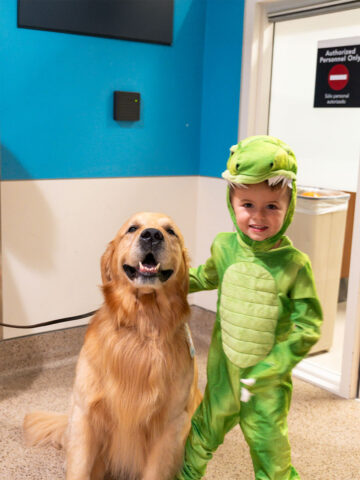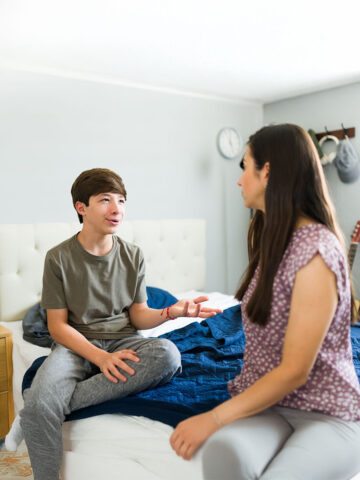Anxiety disorders affect about 25% of children between the ages of 13 and 18 years old. Below we explore what anxiety is, the various types of anxiety disorders and who is most at risk for developing anxiety.
What is anxiety?
Anxiety is a mental and physical reaction to things that may appear to be—or may be interpreted by an individual to be—threats. In small doses, anxiety can be helpful. It protects us from danger and helps us notice problems. But when anxiety grows too big, or occurs too frequently, it can keep us from our normal activities.
Anxiety drives people to avoid things that scare them. When a scary thing is avoided, there is a short-lived sense of relief. However, the next time the situation arises, it seems even scarier and the anxiety can get worse.
Remember that anxiety can look different from person to person; some people may experience worry about many areas in their life, while others notice it in social settings or in response to specific things, such as animals or heights.
What are the different types of anxiety disorders?
- Generalized Anxiety Disorder (GAD)
- Social anxiety
- Separation anxiety
- Phobias
- Selective Mutism
- Post-Traumatic Stress Disorder
- Obsessive-Compulsive Disorder
- Substance/Medication-Induced Anxiety Disorder
- Anxiety disorder due to another medical condition
What are some of the symptoms of anxiety?
Anxiety symptoms vary from person to person and also by age. It can be difficult to spot in some kids. Anxiety can include but is not limited to:
- Worry that’s difficult to control
- Worrying about things that haven’t happened yet, or may not ever happen
- Feeling very nervous
- Sleep problems
- Clingy behavior
- Muscle tension
- Avoidance of situations
- Difficulty concentrating
- Increased heart rate
- Frequent stomachaches, headaches, or other physical complaints
- Irritability
- Becoming easily tired, frequent fatigue
- Being easily startled
Who experiences anxiety?
Anxiety is the most common mental health disorder among adults and children. According to the National Institute of Mental Health, one in four adolescents has mild to moderate anxiety, though it can also be seen even in very young children. Girls are more likely than boys to be diagnosed with an anxiety disorder.
Experts believe anxiety disorders can be both genetic (inherited by parents) and caused by environmental factors (such as a traumatic event). A child can also learn anxiety and fear from family members and others.
It is important to note that anxiety in children and teens often overlaps with depression. Knowing the signs and symptoms of both conditions can help you best identify how to support your child.
Crisis Resources
If your child expresses thoughts of wanting to harm themselves or others, call 9-1-1 or visit the nearest emergency department.
988 Suicide and Crisis Lifeline:
Call 9-8-8
Text any message to 9-8-8
Chat online at 988lifeline.org/chat
Crisis Text Line:
Text “HOME” to 741741
External resources
Anxiety and Depression Association of America
adaa.org
National Institute of Mental Health
www.nimh.nih.gov
Therapist Aid – Anxiety Tools
www.therapistaid.com
Learn more about CHOC’s pediatric mental health services
At CHOC, we specialize in providing a full spectrum of pediatric mental healthcare, including inpatient, intensive outpatient and outpatient program services.
Get 24/7 advice from CHOC
External resources
Anxiety and Depression Association of America
adaa.org
National Institute of Mental Health
www.nimh.nih.gov
Therapist Aid – Anxiety Tools
www.therapistaid.com





